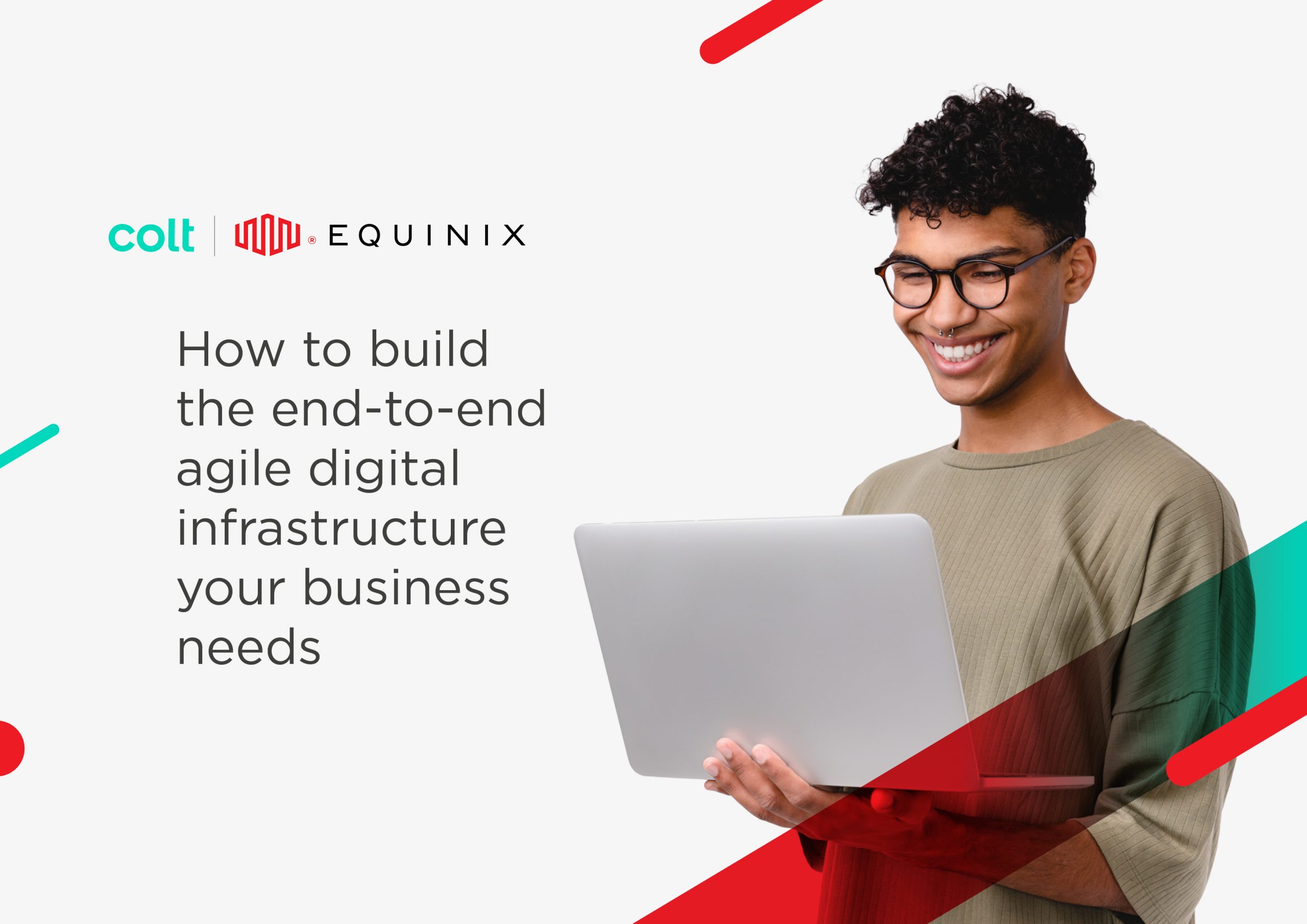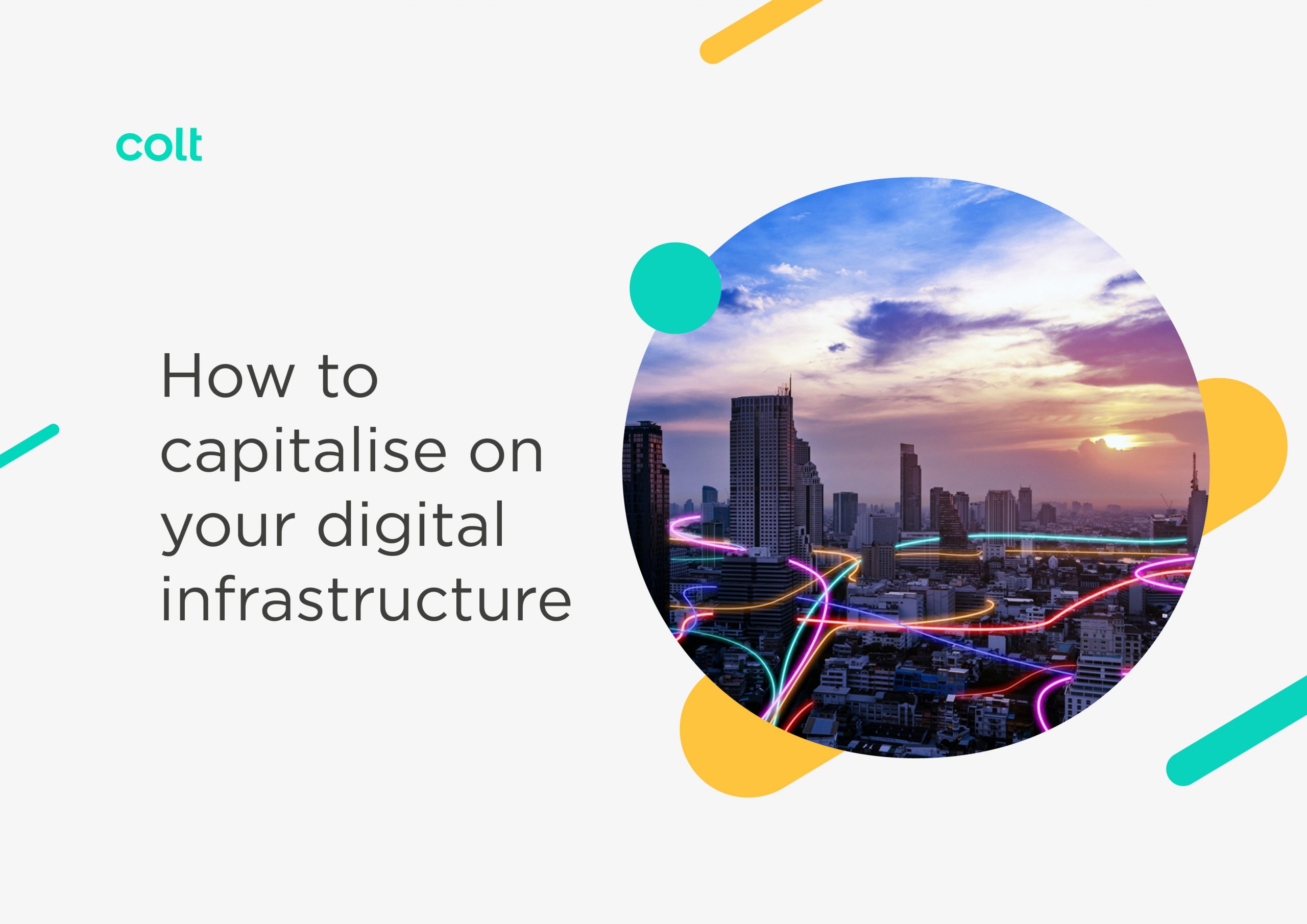Discover:
Welcome
Welcome to part one of our new customer experience (CX) content series. In this series we will delve into the critical role of digital infrastructure (DI) in delivering exceptional customer experiences and giving companies that competitive edge.
As businesses increasingly prioritise CX as a key differentiator, finding ways to better meet customers' evolving expectations has become crucial. Investing in improved digital infrastructure has emerged as one of the most effective solutions, enabling businesses to provide seamless and personalised experiences across multiple channels, without adding to workloads.
If you're a business looking to become a customer experience leader, you've come to the right place. Our series features a range of exciting, thought-leading content and advice from top analysts, influencers, and leaders in the DI and CX space. We'll also share some of our own secrets to success, providing you with guidance on how to elevate your own digital infrastructure to deliver exceptional customer experiences.
So, grab yourself a large cup of coffee and get ready to overindulge. Together, we'll explore how digital infrastructure can transform your customer experience and drive your business forward.
Digital infrastructure - an introduction

What is digital infrastructure?
Digital infrastructure is defined as the hardware and software technologies that help support a company’s digital operations. It helps them operate, innovate and meet customer needs. DI can be made from physical or virtual components and examples include connectivity, cloud, security, data centres and applications.
Digital infrastructure is crucial for today’s businesses because it's essentially the foundation upon which their digital systems and services are built. This type of infrastructure allows companies to store, process, and transmit a great amount of data, connect efficiently with customers and partners, and deliver a wide range of digital services on a much larger scale.
Learn what digital infrastructure means at Colt or hear from our EVP of Strategy and Transformation, Jaya Deshmukh on ‘why digital infrastructure?’ below:
The Digital Revolution may have initially pushed companies into digitalising their operations, but the benefits are now widely recognised. As the world becomes increasingly digitalised, companies are starting to rely heavily on technology, with digital infrastructure playing a huge part in many transformations. And, as technology continues to advance, the need for well-built DI will only increase.
In the past, updating infrastructure was slow and expensive. Today, it can be agile, scalable and cost-effective thanks to technological advancements. Well-built digital infrastructure enables companies to operate more efficiently, grow, innovate, and better meet customer demand.
In addition to supporting company growth and improving CX, DI has also played a crucial role in promoting better employee experiences. By providing improved interconnectivity between internal teams, it has fostered collaboration, communication and productivity.
The growth in digital infrastructure today is being driven by a variety of factors from the rise of cloud computing, and the Internet of Things (IoT), to the increased importance and demand for automation, data analytics, and cyber security. We have moved way beyond the need for just a simple connection and basic hardware.
Businesses of all sizes now rely on technology to drive their operations, stay competitive, and support their customers. However, building and maintaining this technology can be complex and costly.
Once upon a time, companies used to view things like the cloud, storage, and connectivity as separate items. Today, they are starting to realise that they can take a much more holistic approach and look at infrastructure as a whole.
Leading businesses are choosing to work with companies like Colt to help support their digital-first-business agenda or create their desired digital ecosystem. Working with a DI business eliminates the tiresome process of companies needing to work with multiple vendors simultaneously (which can result in a diluted customer experience). Businesses want to be able to continuously evolve and expand, and advanced digital infrastructure can offer solutions to meet those needs.
Working with a DI company can offer a multitude of benefits. Some of the most important include cost savings, scope for innovation/scalability, technology expertise, advanced security measures, and product and service reliability.
With benefits like these, companies can operate more efficiently, stay ahead of the competition and focus on prioritising their customer experience.
Understanding the challenges of building digital infrastructure

The adoption of intelligent digital infrastructure is critical for companies to excel and meet customer expectations. From cloud computing to data analytics, technology has reshaped the way businesses operate, compete, and grow. However, despite the many benefits, building and managing truly agile digital infrastructure can be a complex and challenging process.
Digitising operations is normally a gradual process that takes time and effort. Companies face barriers such as cost, time and complexity when making big decisions such as switching suppliers and upgrading infrastructure. Furthermore, long-term relationships or contractual obligations may hinder the transition process. However, the motivations of enhanced customer service, scalability, collaboration, lower costs and better technology often outweigh the barriers.
The barriers and motivations mentioned here are findings from our latest brand research, which involved surveying nearly 1,000 IT decision makers.
There are several challenges when it comes to building successful DI (and this also depends on what a business classes as successful), but some are similar to those of digital transformation i.e. legacy technology.
We have grouped the most common into three categories:
If a company wants to take a more holistic view of their infrastructure, this means a different budget discussion rather than just what’s needed for a particular project. Businesses must weigh up the benefits against the costs of building and maintaining it. Large companies will need to look at a global view versus a regional or local one, and how this relates to their supplier selection.
The adoption of digital infrastructure can have a big impact across a business. Businesses will need to have acquired ‘buy in’ from leadership on prioritising digital initiatives which can be challenging if budgets are being cut, and the adoption of DI would likely result in the collaboration of teams rather than ‘just IT’ or similar. Companies will need to manage these collaborations as well as any relationships between partners that are brought in as part of the process. Ideally there needs to be a single point of contact and close integration between platforms.
Digital infrastructure enables a business’s existing processes and systems. It needs to be designed to scale with the growth of a business and therefore it needs to be able to handle increasing amounts of data and traffic as the business expands. Though legacy systems are often essential, they weren’t designed to interface well with other pieces of technology and were created in a different era, to solve a different set of challenges. Though the transition is not necessarily going to be easy (say from hardware to software), if a company wants benefits like flexibility, this hurdle is worth jumping.
Businesses must be prepared to manage demand across multiple users and departments, and they must decide who is going to be in control and who is going to keep on top of ongoing maintenance and updates to keep the new infrastructure functioning optimally. When dealing with complex systems in particular, this can be time-consuming.
Infrastructure needs to be built for future use cases and to fit business needs. There needs to be flexibility across all parts, rather than just in pockets. This can be challenging if businesses are working with different vendors for each component. Companies will need to ensure that their people are trained on how to use the new infrastructure and have the skills to make the most of it.
There are multiple ways of accessing digital infrastructure (for example, hybrid and mobile workers), and therefore companies need to think about accessibility, also taking into consideration the inclusion aspect to ensure a great experience for everyone. This includes carefully managing and monitoring the user experience of apps that run on their new infrastructure.
Digital transformation can generate large amounts of data, which must be managed effectively and in keeping with each country’s data protection laws. Businesses need to have processes and tools in place that will store, analyse, and make decisions based on this data. Security is a top concern when building DI – especially in places like the cloud – and therefore companies need to ensure their DI is secure in the face of cyber-attacks, data breaches, and other security-related threats.
Overall, building digital infrastructure requires careful planning, expertise, and investment. Companies need to be prepared to address these and build DI that is secure, stable and effective. Working with the right partners, who have experience working across different ecosystems, can help you navigate such challenges and make your digital transformation journey much easier.
If businesses do these things effectively, they can remain competitive and look forward to new infrastructure with enhanced performance that delivers improved customer experiences.
If you are looking to build on your existing infrastructure, there are several key steps you need to take which are quite self-explanatory:
- Assess current infrastructure
- Define goals
- Find the right partners
- Develop a plan
- Invest in the right tech & maintenance
- Prioritise cyber security
- Train your people
- Monitor and adjust
- Focus on data management
If you’re looking for tips on how to build end-to-end agile digital infrastructure to suit your business needs, our joint paper with Equinix would be a great place to start.
Customer experience through the lens of digital infrastructure

What is customer experience?
Customer experience refers to a customer's overall perception of a company and its products and services. This includes all interactions with a brand throughout the entire buyer's journey; website quality, advertising, customer service, product and/or service standard, and convenience of the customer journey all contribute to CX.
As a digital infrastructure company, our customers form opinions based on the experience they have with all aspects of our business, but especially with our services and products. They will be evaluating factors such as ease of use, speed, reliability, accessibility, responsiveness, security, performance, and personalisation to form their view.
It's important to note that customer experience can change quickly. Several factors that can impact CX include:
Each interaction you have with a customer is an opportunity to build a stronger or weaker bond.
A few years ago, most companies would say it was the quality of their product or service that helped them win new customers. Today, it’s just as important to provide a high quality, consistent and personalised customer experience. CX has a direct impact on the success and longevity of a business, as well as its bottom line.
A positive customer experience can lead to loyalty, repeat business, increased revenue through upselling, great reviews, and referrals, whilst a bad experience can result in lost customers (AKA lost revenue) and damage to a company's reputation.
Here are just a few recent CX statistics that speak volumes:
Enhancing the customer experience has raised sales revenues by 2-7%!
Source information:
The competition for customers has never been more intense. And, in a market where brand loyalty is diminishing, businesses can no longer rely on price alone to differentiate themselves. The key to standing out and building lasting customer relationships is to prioritise CX.
By investing in the necessary infrastructure and support services, businesses can offer a consistent, personalised and seamless customer journey that sets them apart. This is why companies are making CX their top business priority with some basing their entire strategy around the customer journey.
Customers expect to consume relevant content, in the format of their choosing, at any time. Companies that fail to recognise this are falling behind. They need to understand that CX should be ingrained throughout their entire workforce, not just in those who work directly with customers.
Agile and well-built digital infrastructure has become indispensable for modern businesses. It can provide them with the tools to operate more efficiently, make data-driven decisions and save costs. However, whether companies utilise their infrastructure to enhance customer experience is entirely up to them.
At Colt, we know that DI can enhance CX by providing improved accessibility, speed, convenience, communication, and personalisation, but that’s because CX takes centre stage for us as a business.
A positive customer experience is much more than just a nice to have at Colt – it's at the forefront of everything we do. But creating a great CX isn’t really possible if you don’t have the right digital infrastructure in place.
Digital infrastructure, when built and planned well, gives companies the opportunity to keep up with the demands of the increasingly hyper-connected customer.
Companies can store huge quantities of data which can be analysed to gain valuable customer insights. Processes can be simplified or automated and problems like a lost connection can be identified and fixed before they're even broken. Artificial Intelligence (AI) chatbots are increasingly being used to provide immediate customer assistance, which means fewer hands-on deck and quicker responses. These examples only touch the surface of what the right technology, enabled by digital infrastructure, can do.
Measuring customer experience is a critical component of company success because it allows businesses to identify areas for improvement and gauge whether they are meeting their customers’ needs and expectations. There are various ways to measure CX, and how each company defines it may differ. Typically, CX metrics fall into five categories: customer satisfaction, customer loyalty/churn, advocacy, product or service quality, and employee engagement.
While top-level metrics like Net Promoter Score (NPS) are important, they should not be the sole measurement. Other popular methods for measurement include customer satisfaction surveys, Customer Effort Score (CES), customer reviews and feedback, customer journey mapping, customer behaviour analysis, and analytics/metrics such as Key Performance Indicators (KPIs) and Customer Lifetime Value (CLTV).
It's important to note that there is no one or right way to measure customer experience; all companies are different. What matters most is determining what works best for your business and using a combination of methods to gain a comprehensive understanding.
As a digital infrastructure company, we are proud to be at the forefront of customer experience, but we are constantly seeking to improve. Later in the series, we will share some of the tools and metrics we use to ensure that we consistently exceed our customers' expectations.
If you’d like to find out more about our approach to customer experience, head to our About page.
Creating a future-proof business: A spotlight on ESG goals and customer needs

It’s no longer enough for a company to just have sustainability goals. Technology leaders are now increasingly finding that they must bake ESG into their infrastructure by design.
This is a big part of delivering a great customer experience because customers want to buy from companies who are doing the right thing and taking ESG seriously. In addition, ESG integration can lead to enhanced transparency which is another must for today’s customers when it comes to purchasing decisions.
To explore this topic further, we brought together our Senior Director of Strategic Sales, Malcolm Puddefoot – who really knows our customers well – and Influencer and leading expert in emerging technologies (and their impact on society) Professor Sally Eaves. Sally has been described as the ‘torchbearer for ethical tech’ and together with Malcolm, they discuss three of today’s biggest trends: digital infrastructure, ESG, and customer experience (or personalisation of experience as Sally likes to call it).
In the video below, watch Malcom and Sally dive into topics such as the advantages of embracing ESG, the demands around customer experience and much more:

The Colt experience – what it means for our customers
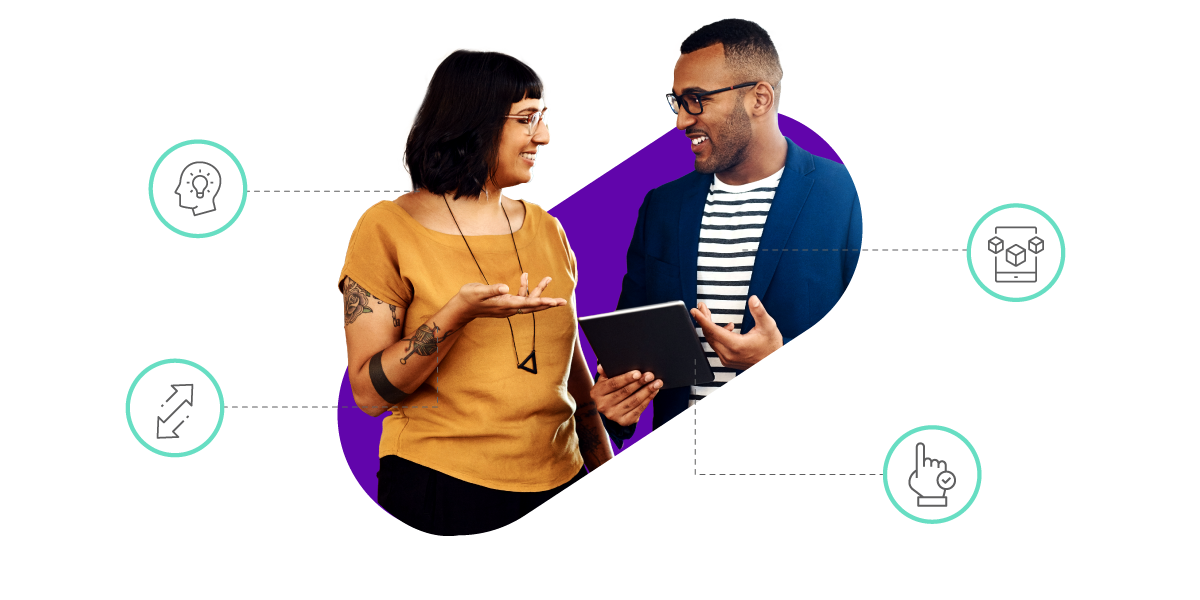
For over 30 years, Colt has been helping businesses succeed by delivering extraordinary connections with genuine care. We’ve grown from a City of London challenger telecommunications company into a global digital infrastructure business. We’ve gone from strength to strength, increasing our presence, making an impact through smart investments, bringing invaluable employees onboard (our Colties), building strong partnerships, refining our own DI and, of course, offering customers the best solution to their transformation needs.
Today, we may be known for our industry-leading net promoter scores and ongoing commitment to sustainability, but we also differentiate ourselves from the competition through a little something we like to call the Colt experience. In fact, you might have seen our campaign all about this from the start of the year.
The Colt experience encompasses all the things we do as a company that affect the customer experience. It's the experience that customers have when working with us and it’s the reason why we’re able to build and retain such valued relationships with them. We want to ensure our customers always feel heard, valued, listened to, respected and empowered. The Colt experience works because all Colties are onboard and our customers trust in us, knowing that we only have their best interests at heart.
Our commitment to customer experience may see us receive high NPS scores, win awards and set new standards, but this wouldn’t be possible if we stayed complacent or didn’t have the wide range of measures in place that centre around improving the CX.
In our latest brand research of nearly 1,000 IT decision makers, 58% said they were more than likely to 'choose Colt tomorrow' if we had the connectivity and solution they required, but why is this? Let’s explore what the Colt experience means for our customers...
At Colt, our customers mean everything. We are committed to putting the power of the digital universe in their hands wherever, whenever and however they want. We know they want to stay ahead and in control at every stage of the journey and that’s why we’re focused on creating a culture of ease for them.
We work very closely with our customers to really understand their end goals so we can shape our services to meet those specific needs. We give them confidence by letting them control how they engage with our ecosystem of the industry’s best technology companies, and they only pay for what they consume with our consumption-based approach. Our customers appreciate this flexibility and choose our services because they are simple, swift, flexible and fully automated where possible. This means customers can stay on top and in control, ultimately enabling them to do more, at speed, around the world.
With this approach, we can provide our customers with a leading, seamless and memorable experience, whether that’s during initial enquiry, service delivery, or when receiving in-life support.
Customer service was recently identified as one of Colt’s top three functional strengths (just below speed of service provisioning and alongside reliability) in our latest brand research.
Our people are committed to really listening to our customers and understanding their needs so they can make sure we’re constantly exceeding expectations. Our network of Colties spreads far and wide to over 60 offices in 32 countries, offering global reach with local support. We empower our diverse employees because we believe the best ideas come when they feel like they can be entrepreneurial – trying new things for customers and the business and sharing their input and ideas which leads to new and improved solutions.
What the difference really is though is that our people genuinely care.
It goes without saying that we wouldn’t be able to deliver a leading customer experience without our partners who we carefully pick to ensure our beliefs and values are aligned (especially on issues like sustainability). By working with some of the biggest companies in the world across cloud, software, data, and technology, we can offer the best solutions and connect customers wherever they need one.
Hear from our Director of CX Optimisation, Noah Roychowdhury on the importance of customer experience at Colt:
MARKET PULSE NEWSLETTER
Keep your finger on the pulse
Did you know that every couple of weeks, we collect all of the most important stories and news from the world of infrastructure into a simple newsletter? Keep your finger of the pulse of tech by signing up today.
Measuring customer experience at Colt

Customer experience management is on the rise and over 5,000 companies worldwide now have a dedicated CX leader, nearly half of whom report to the CEO. CX impacts a company’s bottom line and customers are now willing to pay more for a better CX.
But what does a good customer experience look like? Responsiveness may come to mind, the quality of a product or service or perhaps a belief that a company actually cares. But this can of course vary depending on who you’re asking and the supplier or retailer they’re thinking of. So, how do you measure a ‘good’ experience and how can the right platform let you do that more effectively?
Delivering an impressive customer experience needs to be a business priority. There’s no point having it as a focus for some teams, if others are going to treat it as a bonus. For Colt, it's a key part of our strategy and something every team takes seriously.
Forrester recently stated in their ‘The State Of Customer Obsession In B2B Organizations’ (October 2022) report:
'Customer-obsessed B2B organizations outdo their less mature counterparts in almost every business metric that matters: They earn more revenue, see higher revenue retention, are better able to recruit talent, offer better products, and have more confidence in their brand.’
The State Of Customer Obsession In B2B Organizations’ (October 2022) report, Forrester
At Colt, we listen to our customers in a variety of ways to get the fairest and most accurate perception. This is one of our strengths, but what really matters is what we do with that information. Listening is great, but acting on what you’ve learned is what makes the difference.
Types of measurement
When it comes to tracking and measurement, Net Promotor Score is a commonly used metric across all industries. NPS asks customers how likely they are to recommend a product or service. Colt’s current scores are 74 in Europe and 66 in Asia, which are way above the average for our industry. But that’s just part of the picture.
Another form of measurement is Net Easy Score (NES). This measures how easy it is to do business with you as a company. So, while NPS might cover a general level of satisfaction over the service you deliver and the support that goes with it, NES tracks how customers find the experience of buying from you. At Colt, this covers around 8,000 customers per year, and we follow up on every customer comment.
We also speak to our customers to get more qualitative feedback. Our ‘100 Voices’ programme involves speaking to at least 100 customers every month to get more detailed feedback on the Colt experience and what it looks like for them. Hear what our Director of CX Optimisation, Noah Rowchowdhury, has to say on the results from our last report:
“This is the third consecutive year that we have completed our flagship customer interview programme called 100 Voices. This time we spoke to 113 customers who reflected on what we do well and what we could do better from a CX standpoint. When combined with machine learning analysis from 7,000 surveys, we observe that our customers are obsessed about low effort and high consistency experiences. In the year ahead, our simplification and automation initiatives promise to deliver just that.”
We take this data, along with insights from customer service tickets, quality scores from our customer facing teams and call transcripts and apply it to our risk dashboard – a custom-built machine learning tool – so it can be analysed at scale. This enables us to derive detailed insights and see trends over time. But the most important thing we do after gathering this information is presenting it back to the business and acting upon the feedback, both positive and any negative.
At Colt, we’re in a unique position where we’re able to build our digital infrastructure for our customers while embracing it ourselves. The scalable, responsive and agile foundation we’ve created means that we can respond quickly, empower our people, and work with our partners to give us the tools and products that customers see a difference from. This could look like improved network monitoring tools, giving customers more insight into the delivery process and closer alignment with partners.
We can do all of this thanks to the insight we collect from our customers, our strategy that puts CX at the heart of our business and our brilliant people who make it all possible. It’s these aspects working together and the fact that we’re always aiming to do better, that enables us to deliver a great experience for our customers.
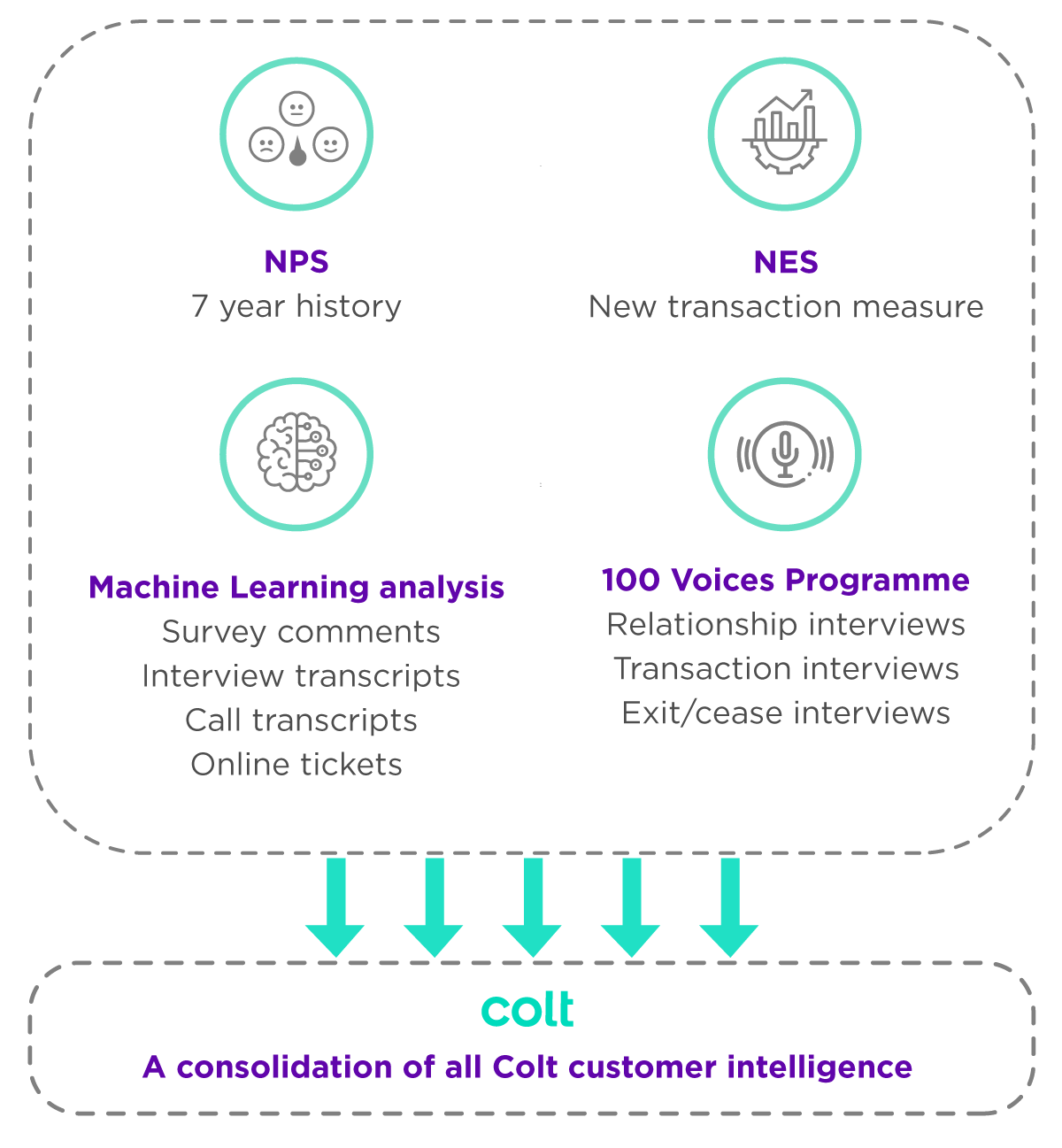
Fireside Chat featuring Forrester
Using digital infrastructure to deliver a better customer experience
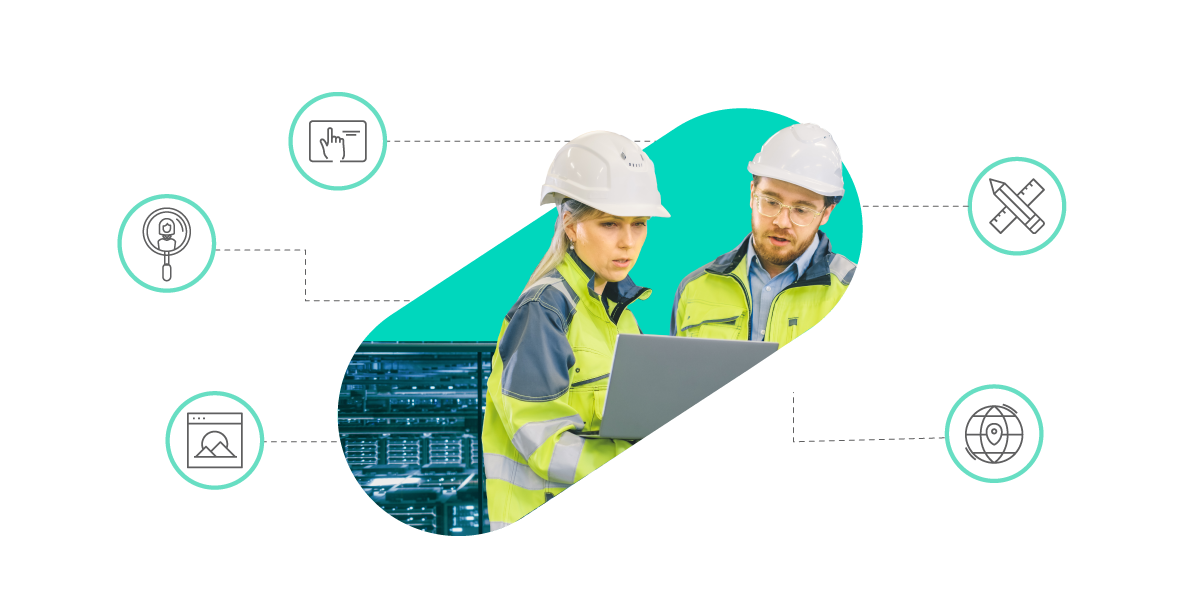
We were delighted to host a Fireside Chat between guest speaker Pascal Matzke, VP and Research Director at Forrester Research and Jaya Deshmukh, our EVP of Strategy and Transformation. Pascal leads Forrester’s global CIO research team that focuses on the digital transformation opportunities for businesses around customer experience as well as connected products and services.
Watch the video to hear Pascal and Jaya share their thoughts on:
Play the Fireside Chat:

The new customer: embracing digitalisation

With customers in the B2C and B2B worlds increasingly opting to shop online or on less traditional platforms, businesses need to adapt to stay competitive. One crucial aspect of this adaptation is re-assessing digital infrastructure to provide the best possible customer experiences. In this section of the series, we will explore the DNA of the new customer and where DI comes into that.
The new customer is always online and always connected. They have rising expectations, are difficult to retain, and demand seamless and convenient online experiences, from browsing and purchasing to receiving after-sales support. If they don’t like an experience, they will move on. Two-thirds of millennials now expect real-time customer service and three-quarters of all customers expect a consistent cross-channel experience. This shift in customer expectations has driven businesses to rethink their strategies and prioritise digitalisation.
Intelligent infrastructure matters more now than ever for customers and is important at every stage of the customer journey. Delivering personalised experiences that cater to individual customer preferences is crucial. With DI that is built, managed and scaled well, businesses can stay relevant and deliver experiences that keep customers engaged and satisfied.
Businesses must prioritise ongoing investments in DI if they want to stay ahead of the competition. They need to be aware of future trends, consider advancements in artificial intelligence such as machine learning and continue to adapt their strategies as they go. Take AI for example, AI-enabled customer service is now said to be the ‘quickest and most effective route for institutions to deliver personalized, proactive experiences that drive customer engagement.'
Because customers are changing so rapidly, companies need to become more data centric. They should be digging into and leveraging their customer interaction data to help deliver a next-level experience. Each customer interaction and conversation can give businesses valuable insight way beyond what can be derived from NPS scores and generic surveys. In the next part of this series, we discuss analysing data in more detail.
What businesses need to remember however is that customers still desire a service with a human touch. It’s therefore best to avoid a strictly automated approach. After all, AI isn’t perfect, and companies are still comprised of talented teams who customers want to speak in person with.
Meeting the demands of the online customer requires businesses to embrace digitalisation and prioritise customer-centric strategies. We encourage businesses to reassess their digital infrastructure (whilst keeping it secure) and stay agile in meeting the changing behaviours and expectations of the new customer. By embracing digitalisation, businesses can create the best possible customer experiences and remain competitive in this highly competitive online marketplace.
The future of customer experience

As technology advances, how businesses interact with their customers is changing rapidly. The future of customer experience is an exciting one, shaped by developments in artificial intelligence, Augmented Reality (AR), Virtual Reality (VR) and 5G. Companies must be prepared to take advantage of these advancements to stay ahead of the curve. So, how can businesses prepare for these changes and deliver an exceptional CX in the future?
First and foremost, businesses need to embrace technology. This means investing in AI, AR/VR, 5G and cloud computing to create more personalised, engaging and compelling customer experiences. Businesses can use AI to analyse customer data and understand individual preferences and behaviour. Augmented and virtual reality can create unique and engaging shopping experiences that cater to customers' preferences. And, with 5G, businesses can deliver fast and reliable customer experiences at the edge, even as traffic and demand for new features and services increase.
One of the most important things businesses can do to prepare for the future is to focus on customer data and the analysis AI can glean. By examining this data, companies can gain valuable insight into individual preferences and behaviour. This can then be used to drive personalised experiences and build customer loyalty.
But collecting customer data is just the first step. It's also essential to protect that data and ensure it's used responsibly and securely, using something like Colt’s encryption technology or secure network gateway. With increased data privacy awareness, businesses need robust security measures.
On this topic, we were the first digital infrastructure company in a post-GDPR world to have binding corporate rules (BCRs), the highest privacy compliance standard in the world. You can find out more on our dedicated BCR page.
Another critical element of the future of customer experience is omnichannel engagement. Customers expect seamless experiences across all touchpoints on their buying journey. This includes in store, call centres, websites and mobile apps. To deliver on this expectation, businesses need to create an omnichannel strategy that integrates systems and data across the organisation. This requires a significant investment in technology and a commitment to delivering a consistent and unified experience across all channels.
At Colt, we provide omnichannel sports retailer Decathlon with its unique digital infrastructure, allowing it to deliver an exceptional customer experience across all its touchpoints.
Businesses must foster a culture of innovation to succeed in what is a rapidly evolving customer experience landscape. This means encouraging continuous improvement, experimenting with new ideas and technologies and taking calculated risks. Businesses can also equip employees with the skills and knowledge they need to deliver exceptional customer experiences by investing in training and development and ensuring they understand the importance of customer centricity.
So, what does all of this mean for businesses that want to succeed in the future of customer experience? It means embracing technology, focusing on customer data, creating an omnichannel strategy, prioritising data privacy and security, fostering a culture of innovation, and investing in employee training and development. And to do this, ensure you have effective digital infrastructure in place as it's the bedrock to which these strategies can develop.
Choose the Colt experience
At Colt, we want to be the digital infrastructure company that leading businesses choose to connect with. If you’d like us to help you identify what technology you need as a business to help foster a better experience for your customers, contact us today.
How to capitalise on your digital infrastructure
Whitepaper
Drawing insights from the Fireside Chat between Jaya Deshmukh, our EVP of Strategy and Transformation, and guest speaker Pascal Matzke, VP and Research Director at Forrester Research, this paper provides practical advice on how to get started with digital infrastructure, underlining the need to transition from traditional, linear transactions to continuous interactions.
Read on to discover how digital infrastructure is not merely a connectivity tool but a catalyst for business value, increased revenue, exceptional customer experiences and enhanced employee productivity.
MARKET PULSE NEWSLETTER
Keep your finger on the pulse
Did you know that every couple of weeks, we collect all of the most important stories and news from the world of infrastructure into a simple newsletter? Keep your finger of the pulse of tech by signing up today.
